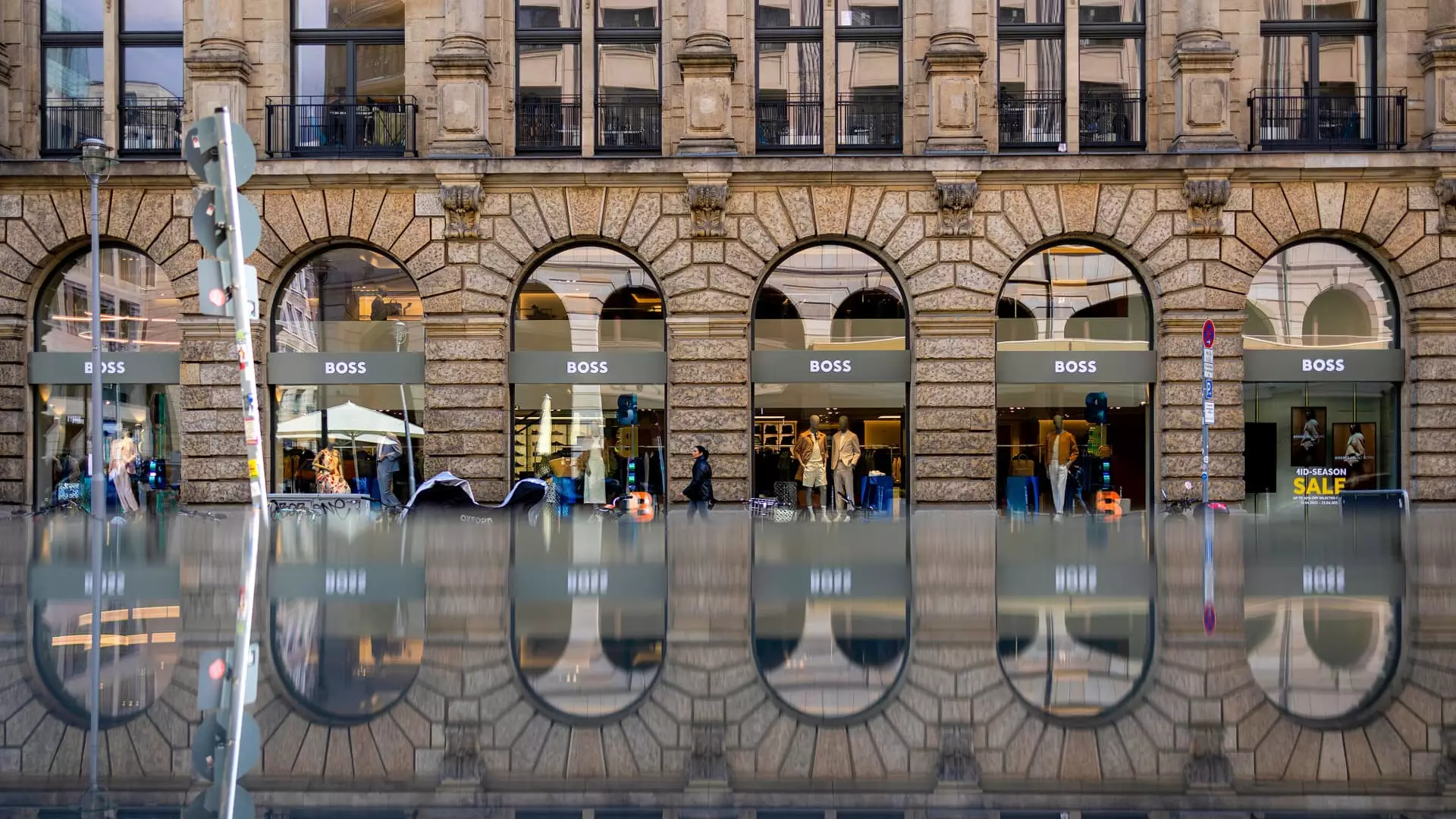The recent performance of Hugo Boss in the face of challenging market conditions is a study in contrasts. The German luxury retailer’s shares surged following a report that revealed a smaller-than-anticipated decline in sales for the first quarter of 2025. With a reported drop of only 2% in revenues to 999 million euros, the company seems to have weathered some storms, in stark contrast to the gloom predicted by analysts. But should investors and stakeholders rejoice at this seemingly bright news, or is there more to dissect beneath the surface?
The Unexpected Bounce Back
Often in the world of business, good news is met with skepticism, particularly when a downturn is expected. Hugo Boss reported first-quarter sales that narrowly escaped the lower expectations set by analysts’ forecasts. As a result, the stock price jumped by nearly 9% initially—a significant leap that indicates investor sentiment might be looking at a glass half full. However, the fact remains that despite this positive blip, a 2% decline signifies underlying issues that are likely more complicated than the optimistic numbers suggest.
The recovery in stock prices following this report demonstrates a phenomenon typical of market psychology—where even mediocre outcomes can lead to surges in stock price if investors perceive those outcomes as “less bad than feared.” This pattern can obscure the more serious issues lurking within a company’s growth strategy.
China and Global Mood Swings
Hugo Boss’s struggles with declining sales in the Asia-Pacific region, especially in China, raise a red flag that investors must not overlook. While rising macroeconomic uncertainties are mentioned, it is the “ongoing subdued consumer demand in China” that hints at more entrenched problems. The psychological aspect of consumer spending plays a significant role in such markets, and as fears of economic instability mount, the luxury spending habit—often viewed as discretionary—quickly dwindles.
The CEO, Daniel Grieder, has expressed caution regarding consumer sentiment, which could have been exacerbated by concerns about tariffs and a potential U.S. recession. The relationship between consumer confidence and sales is both cyclical and reactive; bad news begets bad news, resulting in a virtuous cycle of diminished spending. The challenge lies in breaking this cycle, especially when the retailer has an elevated stake in the U.S. market, which contributes around 15% of its total revenues yet faces its own unique pressures.
Strategic Adjustments or Desperate Measures?
Amid this disquiet, Grieder has laid out a roadmap that includes redirecting products from China and optimizing global sourcing. This maneuvering could either signal a thoughtful reorganization in response to market dynamics or portray a desperate bid to mitigate risks brought on by U.S. tariffs. As the company leans into a narrative of adaptability, the question remains: how sustainable is this strategy?
Investors should be wary that reallocating sourcing and even implementing pricing adjustments in response to shifting economic conditions does not necessarily guarantee profitability. Instead, it might merely prolong the inevitable reckoning that comes with addressing the real drivers of consumer interest and brand equity. Innovation within product lines, particularly for women’s wear—an area already deemed a soft spot—requires more than just shifting existing frames of operation; it demands reinvention.
The Bigger Picture: Are Tariffs Driving Us Apart?
While tariffs have long been touted as a political lever between nations, their impact transcends beyond mere policy discussions. They reshape market landscapes, and companies like Hugo Boss are caught in the crosshairs. Analysts are increasingly pointing out that any major alteration in the political or economic landscape threatens the small gains seen lately.
Hugo Boss has taken steps to diversify its appeal beyond formal wear, yet in a rapidly changing economy, one must question whether these measures are enough. Addressing the concerns from younger consumers, Grieder mentioned exploring the purchase of an established female fashion brand as a pathway to accelerate growth. Herein lies a critical crossroads for the company: does acquisition represent a strategy rooted in innovation, or is it a sign that the internal growth engines are sputtering?
Ultimately, the road ahead for Hugo Boss is fraught with uncertainty. While today’s results may seem positive, a nuanced analysis reveals that the challenges are substantial and may require more than just a band-aid approach. Only through decisive and innovative action can Hugo Boss hope to transform fleeting stock surges into lasting success in an increasingly competitive arena.


Leave a Reply